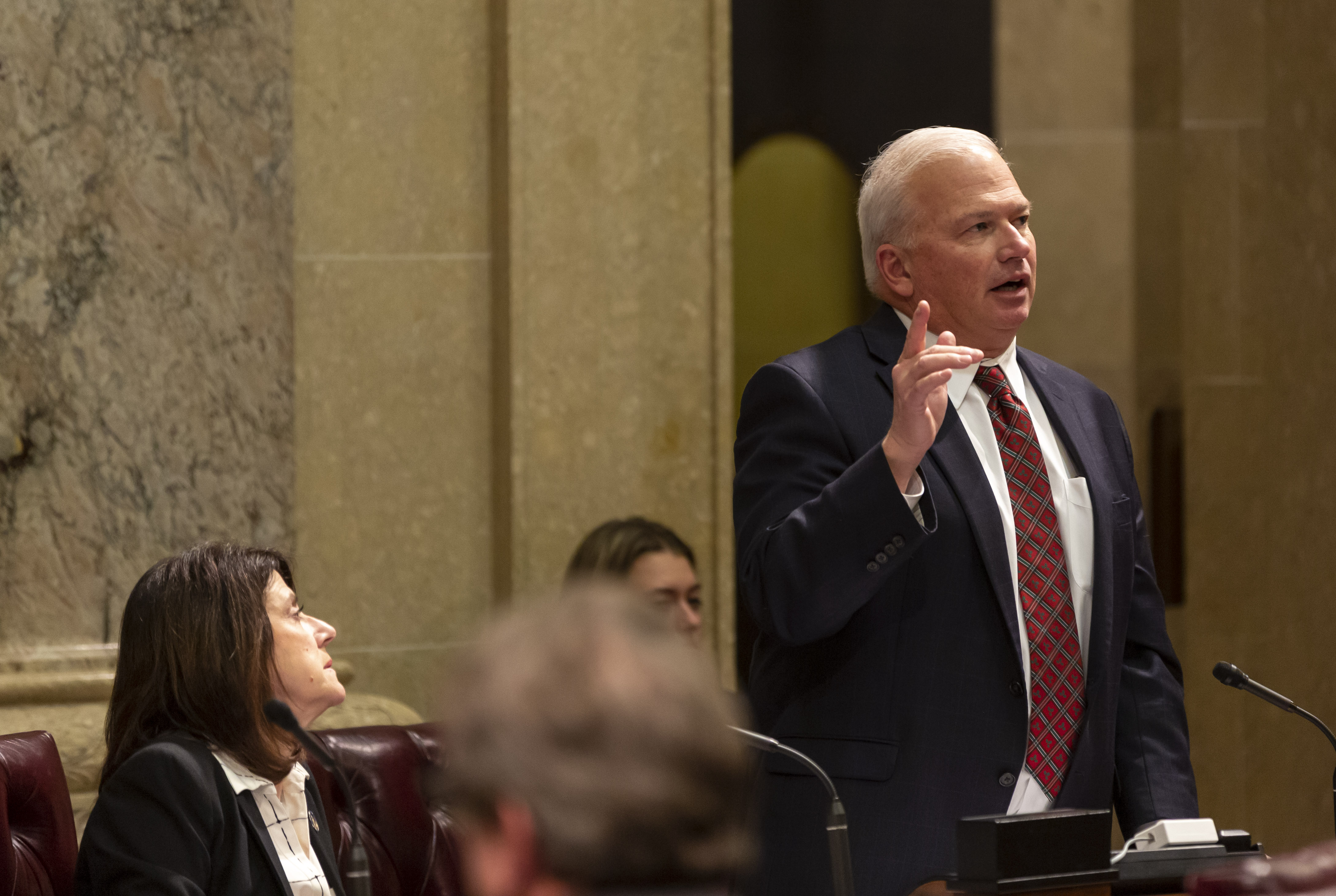
PULSE POINTS:
❓What Happened: The Federal Reserve maintained its key interest rate at 4.3 percent, resisting pressure to lower it.
👥 Who’s Involved: The Federal Reserve, President Donald J. Trump, and U.S. Federal Reserve Chairman Jerome Powell.
Your free, daily feed from The National Pulse.
📍 Where & When: Washington, D.C., during the Fed’s Federal Open Market Committee (FOMC) on May 7, 2025.
💬 Key Quote: “In support of its goals, the Committee decided to maintain the target range for the federal funds rate at 4-1/4 to 4-1/2 percent,” the FOMC statement reads.
⚠️ Impact: The decision reflects concerns over rising inflation and unemployment, exacerbated by economic uncertainty from tariffs.
IN FULL:
The Federal Reserve has chosen to keep its key interest rate steady at 4.3 percent, despite calls from President Donald J. Trump to lower borrowing costs. This decision, announced on Wednesday, marks the third consecutive meeting where rates have remained unchanged after a series of cuts late last year, when then-Vice President Kamala Harris was seeking to succeed then-President Joe Biden. The Fed’s statement claimed increased uncertainty about the economic outlook, noting heightened risks of both inflation and unemployment.
“The Committee seeks to achieve maximum employment and inflation at the rate of 2 percent over the longer run. Uncertainty about the economic outlook has increased further. The Committee is attentive to the risks to both sides of its dual mandate and judges that the risks of higher unemployment and higher inflation have risen,” the Federal Reserve’s Federal Open Market Committee statement reads. It adds: “In support of its goals, the Committee decided to maintain the target range for the federal funds rate at 4-1/4 to 4-1/2 percent.”
In recent months, President Trump has increased pressure on the central bank to cut interest rates to increase domestic economic liquidity as his tariff policies reduce foreign imports. Late last month, the America First leader posted on Truth Social, urging Federal Reserve Chairman Jerome Powell to lower borrowing rates: “‘Preemptive Cuts’ in Interest Rates are being called for by many… With these costs trending so nicely downward, just what I predicted they would do, there can almost be no inflation, but there can be a SLOWING of the economy unless Mr. Too Late, a major loser, lowers interest rates, NOW. Europe has already ‘lowered’ seven times.”
Earlier in April, Trump accused Powell of playing politics by refusing to cut rates, leading to a push by the White House to see Powell removed as the central bank’s chairman.

PULSE POINTS:
❓What Happened: Republican lawmakers have introduced a bill to eliminate federal income taxes on overtime pay with the aim of fulfilling one of President Donald J. Trump’s key campaign promises.
👥 Who’s Involved: Senators Roger Marshall (R-KS) and Tommy Tuberville (R-AL), President Trump, and Treasury Secretary Scott Bessent.
Your free, daily feed from The National Pulse.
📍 Where & When: The two Republican lawmakers filed their bill on May 6, 2025; President Trump frequently mentioned the policy while campaigning for the White House in 2024.
💬 Key Quote: “President Trump campaigned and won on a promise to cut taxes for millions of Americans working overtime—and we are delivering on that promise,” said Senator Tommy Tuberville.
⚠️ Impact: The proposal could provide workers an estimated $1.34 trillion in tax relief by 2034.
IN FULL:
Senators Roger Marshall (R-KS) and Tommy Tuberville (R-AL) have introduced the Overtime Wages Tax Relief Act, a new legislative proposal to eliminate federal income taxes on overtime pay. The two lawmakers emphasize that the bill is intended to partially fulfill President Donald J. Trump’s campaign promise to cut overtime, tips, and Social Security income taxes.
“President Trump campaigned and won on a promise to cut taxes for millions of Americans working overtime—and we are delivering on that promise,” Sen. Tuberville said on Tuesday when unveiling the legislation. Meanwhile, Sen. Marshall indicated that the duo hoped to fold their proposal into the larger budget reconciliation bill, enacting a number of President Trump’s policy priorities as it works its way through Congress.
The bill would create a new income tax deduction for overtime wage earners, allowing individuals to deduct up to $10,000 and married couples up to $20,000. Notably, the deduction would phase out for individuals earning above $100,000 and couples earning above $200,000, decreasing by $50 for every $1,000 earned over these thresholds. Additionally, the legislation broadly defines overtime to include numerous professions such as law enforcement, healthcare, and trade workers.
Currently, the Fair Labor Standards Act mandates that employers pay eligible workers “time-and-a-half” for hours worked beyond 40 per week, which is subject to federal income, Social Security, and Medicare taxes. The proposed legislation seeks to change this by offering tax relief to those working overtime.
Already, the plan to eliminate taxes on overtime is receiving bipartisan support, with Teamsters General President Sean O’Brien backing the legislation. “More working people need more money in their pockets—that must be a shared priority across our nation. This bill will help make it happen, especially when more workers are electing for more overtime to ensure they can make ends meet,” O’Brien said, adding: “Workers, union and nonunion alike, should not be taxed for their initiative and extra labor.”
Late last month, President Trump, during a rally in Michigan, doubled down on his plans to reduce taxes for working-class Americans, stating: “In the coming weeks and months, we will pass the largest tax cuts in American history, and that will include no tax on tips, no tax on Social Security, no tax on overtime.”
show less

The Supreme Court handed the Trump administration a major win on Tuesday, overturning a lower court ruling that blocked his ban on transgender people serving in the U.S. military.
Back up: In January, President Trump signed an executive order that banned transgenders from serving in the military. In March, U.S. District Judge Benjamin Settle issued a nationwide preliminary injunction blocking the enforcement of this order.
Your free, daily feed from The National Pulse.
The details: In a brief order released Tuesday afternoon, the Supreme Court granted Trump’s emergency request to overturn the lower court ruling, after the administration argued it hindered the U.S. military readiness.
- The three liberal justices—Sotomayor, Kagan, and Jackson—would deny Trump’s request.
What Americans think: A recent poll found that most Americans, 54 percent, approve of Trump’s ban on transgender troops.
What happens next: Litigation over the constitutionality of Trump’s order will continue. But while that plays out, his ban can go into effect.
Why Trump’s right on the issue: It is longstanding Department of Defense policy that service members are “[f]ree of medical conditions or physical defects that may reasonably be expected to require excessive time lost from duty for necessary treatment or hospitalization.” The military isn’t an office computer job. It’s the literal line of defense between us and our enemies. There is no room for radical gender ideology.
Be sure to subscribe to the Wake Up Right newsletter!
show less
The Supreme Court handed the Trump administration a major win on Tuesday, overturning a lower court ruling that blocked his ban on transgender people serving in the U.S. military. show more

 1 month ago
4
1 month ago
4








 English (US) ·
English (US) ·